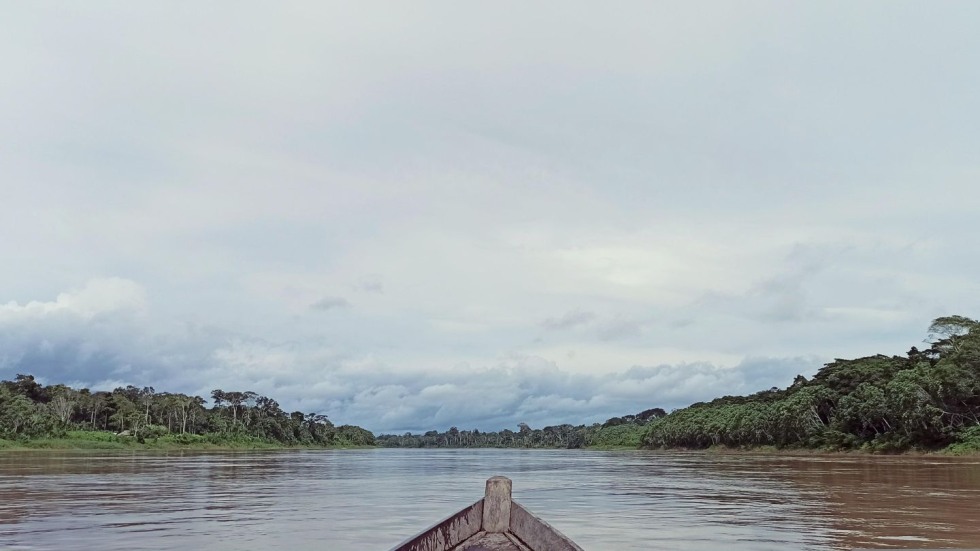Scientists warn that disruptions to the Amazon’s water cycle could lead to increase in global temperatures, even under most optimistic emissions scenarios.
The flying rivers of the world might be close to drying out.
Along the Amazon basin, rainfall is abundant. But just as abundant is the amount of water returned to the skies through the evapotranspiration of the forest. The river below matches the flying rivers above, carrying enough rain to support life in the ecosystem.
But this intricate system, which scientists now suggest affects global climate, grows more vulnerable due to deforestation and climate change. If the Amazon rainforest were to be entirely replaced by crops and pastures, surface temperature could increase by 2.5 degrees Celsius, scientists found in 1990.
Eneas Salati, the “father of the flying rivers,” first discovered how the atmosphere and the biosphere worked together in the Amazon back in 1984 by observing the composition of rainfall water in the region.
Water, which is composed of hydrogen and oxygen, contains two types of oxygen — 16O and 18O. During evaporation, water vapor becomes enriched with 16O, which is light and abundant and evaporates much faster.
On the other hand, liquid water, as in rainfall, is rich in 18O. As water vapor moves to the ocean inland, it goes through many cycles of evaporation and precipitation, which fractionates the composition further. In other words, rainfall near the coast is more abundant in 18O than rainfall in the middle of a continent.
What Salati noticed was that such a rule didn’t seem to apply along the Amazon — rainfall in the region displayed a consistent composition of 18O. For that to be possible, Salati found, the water precipitated from the atmosphere would need to be returned almost immediately; the water in the Amazon basin would need to be constantly recycled.
And Salati was right.
The water from the rain which falls in the Amazon is quickly returned to the atmosphere due to high rates of evapotranspiration in the lush forest. A single water molecule could be recycled up to seven times. This means that the Amazon, through transpiration and evaporation, sustains its own system of rainfall which ensures the existence of the ecosystem.
Salati “was the first to show the forest as a crucial climate factor for its own maintenance. The Amazon is not just a response to climate, but it modifies climate and creates conditions for its own permanence,” explained climatologist Carlos Nobre.
But such a process is only possible due to the forest, which some studies say could quickly disappear. Between 2001 and 2020, the Amazon lost around 9% of its forests, mostly driven by livestock farming.
While deforestation numbers are enough to raise alarms, the issue is far more complex. As forest cover decreases, so does the rate of evapotranspiration and rainfall. Since the Amazon ecosystem is extremely dependent on heavy rainfall, this could disrupt the system by leading to drier conditions. That means any amount of deforestation might have already locked in even more forest loss due to these feedback systems.
Climate change also adds to the risks. Warming temperatures cause prolonged dry seasons, intense drought and extreme rainfall events. The temperatures might also push evapotranspiration to a point where it actually dries out soils, leading to the death of plants.
Changes to the Amazon water cycle would not affect only the region, but the entire globe.
Climate scientists Elena Shevliakova and Stephen Pacala created a climate model to simulate what would happen to global temperatures were the Amazon to disappear by 2050. Even under the most optimistic emissions scenarios, “average temperatures worldwide would rise 0.25°C beyond the expected increase,” they noted.
But when is the point of no return? Considering feedback mechanisms, how can we be sure that we are not already bound to an eventual loss of the Amazon? When will the Amazon reach its tipping point — its point of no return?
That’s where scientists stop having all the answers. Tipping points, which refer to a moment in which changes to a system will make it impossible for it to be reestablished, are extremely difficult to predict for many different reasons. Climate systems behave nonlinearly, which means an observed change is not necessarily directly proportional to a change in temperature. That is the case also because of the immense complexity of feedback systems that make up Earth's climate — oceans, ice sheets, vegetation, clouds, are all subsystems that influence observed data. Models often also need to rely on historical data to check their simulations against, but when it comes to tipping points there are no direct precedents.
While scientists might not know when all hope will be lost, they know that the time to act is now.
And for many that call to action is an opportunity to develop “a truly Amazonian economy,” said ecologist Pablo Moutinho. This would include supporting an equitable distribution of land, uplifting forest peoples and cracking down on illegal, extractive industries in the region.
The Amazon has flying rivers — what else might the region reveal if we sustain its magic?
 Julia Vaz '25 was a student in EEPS 1400 Climate Modeling (Qualitative Track) during the Fall 2024 semester. A Political Science and Modern Culture & Media concentrator, she is passionate about climate and science journalism. The class was instrumental to her understanding of the most pressing topics around climate science and communication.
Julia Vaz '25 was a student in EEPS 1400 Climate Modeling (Qualitative Track) during the Fall 2024 semester. A Political Science and Modern Culture & Media concentrator, she is passionate about climate and science journalism. The class was instrumental to her understanding of the most pressing topics around climate science and communication.